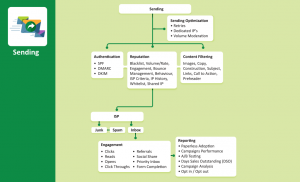Since the dawn of the internet, shopping has gone viral. Literally. Whether it’s the never-ending stream of coupons arriving in our email inboxes, pop up ads taking starring roles in our social media timelines, or phrases like “flash sale” and “discount code” coming up first in search results, online shopping has become part of our daily routine. The act of online shopping, more accurately deemed e-tail, has transformed the way eCommerce websites are created, run, and measured. From design, customer service, messaging, and overall feel (whatever that means), shoppers evaluate these sites like ferocious lions waiting for the next kill, AKA sale. For sites to truly escape the rough seas and win over shoppers, they need to follow a few simple steps. Here are some do’s and don’ts for keeping your website afloat in a sea of options.
Do Research, Research, and More Research: Learning everything and anything there is to know about your shopper may seem a little extreme but it’s essential to running your site effectively and efficiently. Shoppers value the complete experience; pinpointing exactly what it is that experience entails allows for more flexibility when it comes to design, messaging, and positioning. McKinsey even goes as far to say that, “customer experience is becoming a key source of competitive advantage.”Research in all aspects of a website makes for a well-rounded experience and a happy consumer.
Don’t Neglect the Essentials: According to KoMarketing, the three most important things first time visitors want to see on a homepage are contact information, products/services, and an “about us” section. 44% of website visitors will leave the page if there’s no contact information or phone number. And after reaching a company’s website via a referral site, 36% of visitors will click on the company’s logo to return to the homepage. These statistics seem obvious, but hundreds of sites fail to succeed everyday because they’re missing these vital bits of information. Remember the basics and you’ll be smooth sailing.
Do Design for THEM: Today, good design, leads to good business. We’re in the ultimate era of technology and with that comes the ultimate stage for design. According to a 2015 study by Adobe, when given a 15 minute window to browse content, 66% of people would rather read something beautifully designed then something plain. Pictures aren’t loading? Goodbye. The website itself isn’t loading? See ya. Sloppy layout? You’re outta here. Design-driven companies recognize that while data is important to success, people really just like pretty pictures. Simple as that. So be sure to execute your design to perfection or you’ll see your shoppers leave with nothing but an empty cart.
Don’t Go Overboard: These days, websites don’t require flashy pop ups, outrageous graphics or over the top messaging. As long as you stay on point with your brand and keep the focus on making the shopper happy, you’ll forget all about the days of automatic homepage music and animated cursors.
Do Focus on Data: “Organizations need to move to a cycle of continuous delivery and improvement, adopting methods such as agile development and “live beta,” supported by big data analytics, to increase the pace of innovation,” says consulting firm McKinsey. In short, change is good. Companies constantly need to evaluate their sites to make sure they’re meeting the needs of their consumers. If the data reveals an issue, fix it and move on. Evolving with the times means utilizing data to propel your business in the right direction. But innovation can only happen if there is a willingness to make changes.
Don’t Forget the Cell Phone: In a recent study published by comScore, mobile devices now account for nearly 2 of every 3 minutes spent online. This means more shoppers browse websites in the palm of their hand then on their desktop. To make sure your shoppers understand the goal of your site as well as what products and services are offered, it all comes down to messaging. Communicate value in your messaging and shoppers will spend less time looking for details and more time purchasing the goods. And the same design tip applies to mobile: make it simple, make it sleek, and make it responsive.
In conclusion, Ai’s UX designer Francia Sandoval stresses the importance of entry points and expectations. “Sites need to provide clear journeys for their consumers. If someone can’t find the item they’re looking for in the first place then there’s a big issue with navigation and site structure,” says Sandoval. Additionally, users need to know what’s going to happen next, especially in the shopping cart. “Nothing is worse than filling out your information and then discovering you have 7 more steps to go through to accomplish your goal.”
Digital & Social Articles on Business 2 Community(41)




